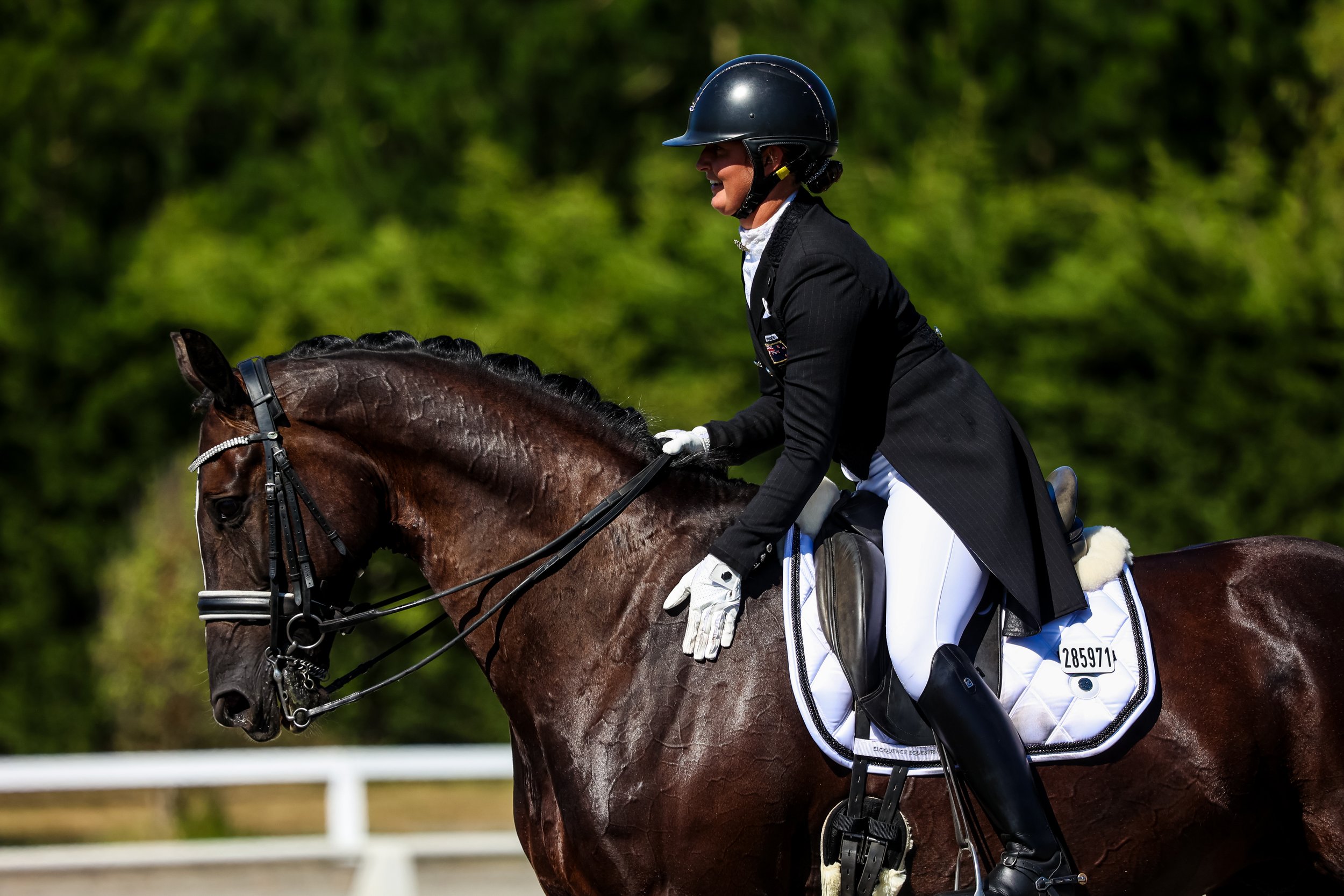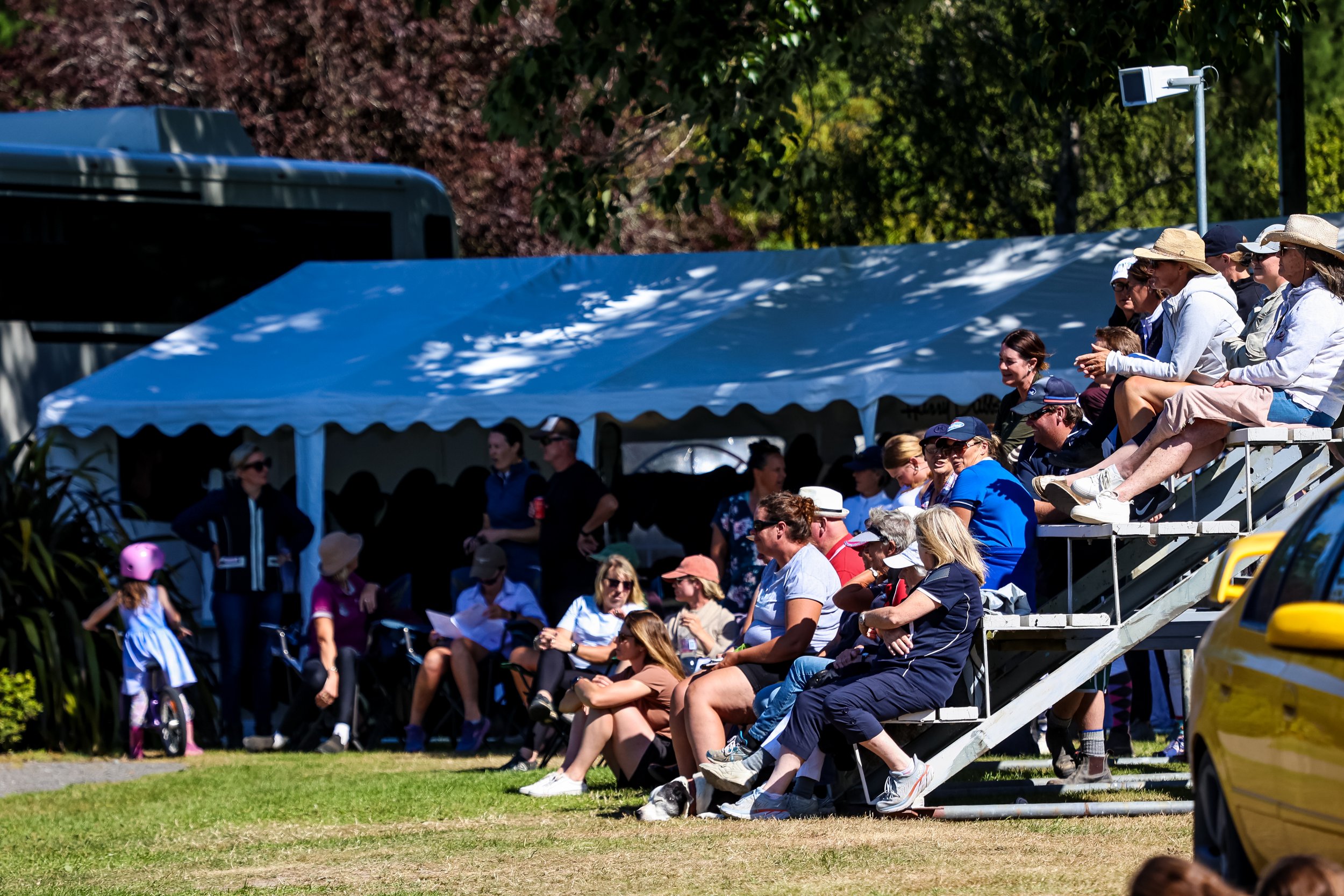
Welcome to Dressage
Canterbury
We are a group of like-minded individuals who share a belief that harmonious riding and correct training develops a trusting partnership with a horse.
This same philosophy has been subsequently echoed by Dressage NZ (DNZ), a discipline of ESNZ, under which Dressage Canterbury now operates.
DNZ’s promotion of the willingness, expression, flexibility, balance and power in the horse as being the ultimate goal, so that many different types of horses are able to participate and achieve, is exactly why Dressage Canterbury was formed over 65 years ago.
Do you believe that harmonious riding and correct training develops a trusting relationship with a horse? If so, we look forward to seeing you at our next event and invite you to get involved!

We provide…
Competitions
Regular competitions for all levels of riders, both registered and unregistered.
Spring Series (Sept, Oct and Nov)
Canterbury Championships (Premier League show)
Autumn Day (March)
Our Judges are trained to National and International standards, and we offer specific training programmes and mentorships for those interested in developing their skills in this highly valued aspect of the sport. You can click here if you would like to become a judge.
Education
Education and coaching events to promote development opportunities for all levels of riders and horses outside the competition season.
Education Evenings (May, June, July and Aug)
Protocol Days (June, July and Aug)

Upcoming events…
Dressage NZ Calendar & Events click below

The Venue…
Based at the beautiful grounds of the South Island Dunstan Horsefeeds National Equestrian Centre – McLeans Island, Christchurch.
We are privileged to have the use of numerous all-weather arenas, covered yards and camping facilities together with jumping and hacking out areas.

Our Sponsors…
Our Sponsors are our lifeline.
We openly acknowledge that without them, we would not be able to offer the huge variety of competitions and educational opportunities that we do. We support them whole-heartedly and encourage as much interaction with them as possible.
Major Sponsors
Our Partners

Join us…
A great team of enthusiastic volunteers manage all our events. Their dedication to our sport is only surpassed by their commitment to always have fun (whilst working hard!), and they love welcoming new faces and willing hands.
Check out the calendar for all upcoming events, whether you’re competing or just spectating, we welcome everybody.
Our current committee
Chairperson
Margaret Grant - canterburydressage@gmail.com
Deputy Chairperson
Sally Cooper-Johnston - canterburydressage@gmail.com
Treasurer
Linda Dann - cdg1treasurer@gmail.com
Event Secretary
Ken Wilson - canterburyentries@gmail.com
Minutes Secretary
Shannon Brien - cdgsecretary@gmail.com
Judges Officer
Linda Warren-Davey - ponytail007@gmail.com
Sponsorship Team
Sally Cooper-Johnston, Michelle Gilmore,
Meagan Dampier-Crossley - cdgsponsorship@gmail.com
Health & Safety Officer
Christine Lewis
Area Delegate
Sally Cooper-Johnston
Event(s) Manager
Sally Goldsmith, Cherie Pearson
Riders Rep
Sandy Houston
Social media Officer
Anne Cochrane - ctbynews@gmail.com
Dressage Canterbury NEC Representative
Cherie Pearson
Scorer/Results
Ken Wilson
Stewards Co-ordinator
Robin Savage, Julia Thompson
Writers Co-ordinator
Lauren Haig
Education & Training Officer
Anne Cochrane






